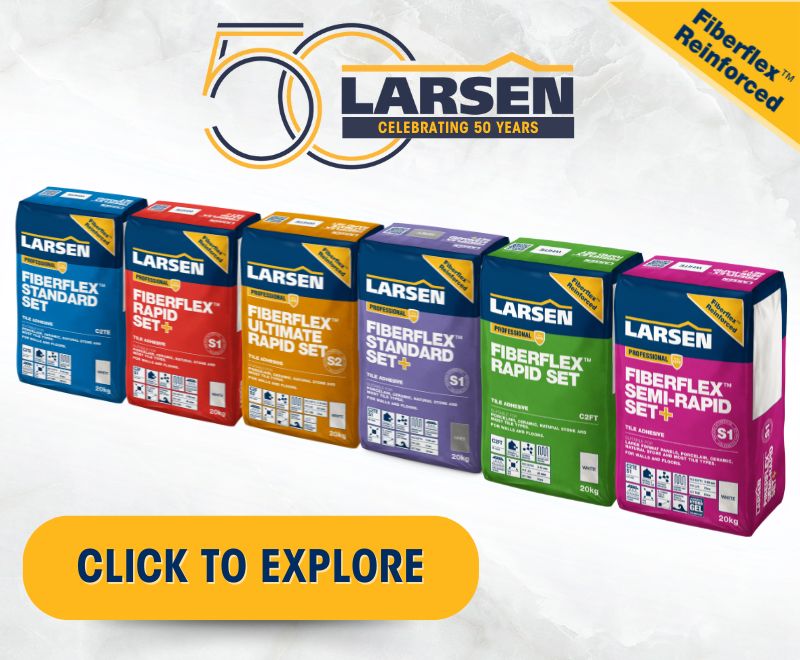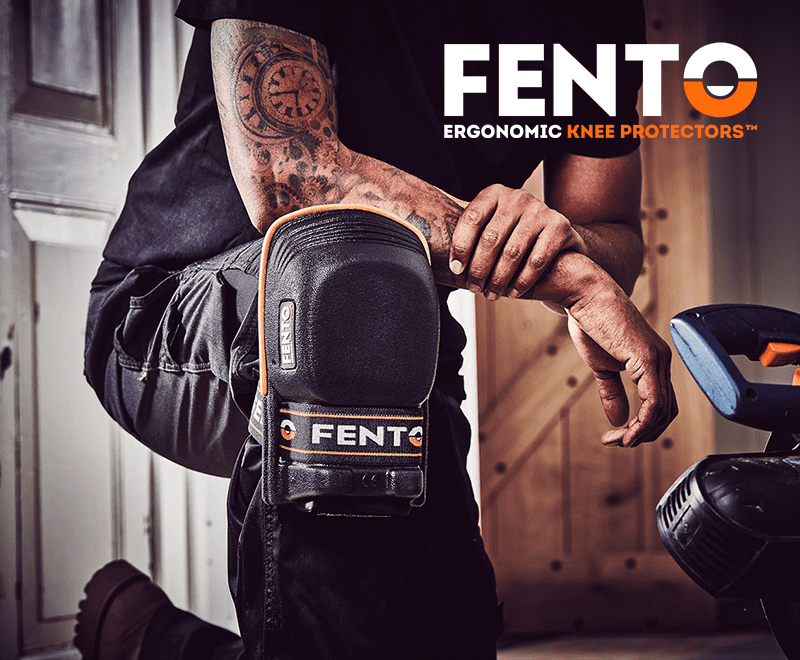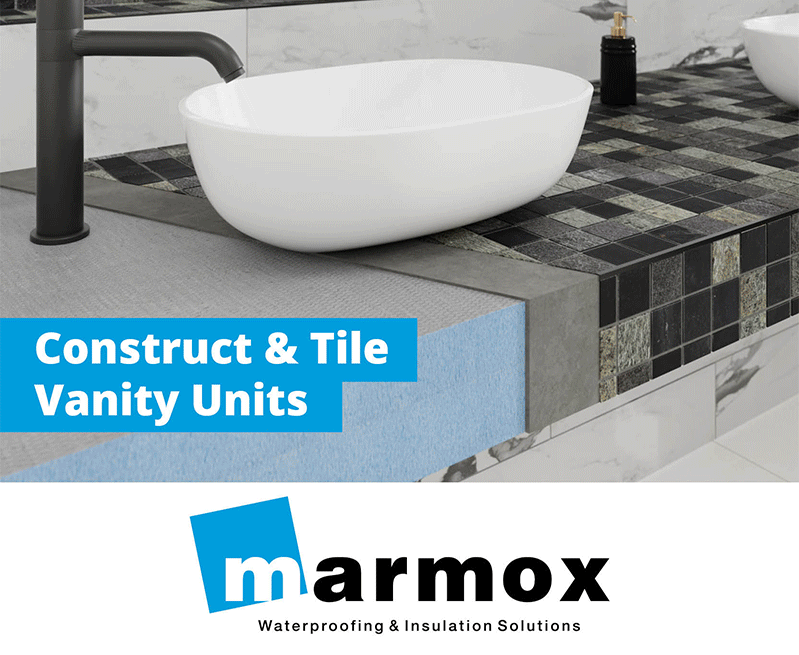Jim Percival, technical director at Palace Chemicals considers the move to ever larger tile sizes and the implications for tile fixers.
LARGE porcelain panels are now seen in both commercial and residential installations. The reason for this is the dramatic statement they can make, with their sleek and unfussy aesthetics. This is because large format tiles and panels have fewer grout lines, allowing a clean and uninterrupted finish.
For certain applications, such as hygiene-sensitive environments like kitchens and bathrooms, there are also hygiene benefits, since the reduced grout lines mean they’re easier to clean.
According to the latest British Standard, BS 5385, a large format ceramic tile is defined as a ceramic tile with a surface area greater than 3,600sq cm, but no tile edge greater than 1,200mm. Meanwhile a large format ceramic panel has either a surface area greater than 1sq m or any edge longer than 1,200mm.
For the tile fixer, working with these larger panels presents several challenges regarding storage, transporting and handling, particularly in locations where access is restricted.
One of the most important considerations is the adhesive used for fixing panels. As usual, British Standards should be the best guide for the tile fixer, in this case BS 5385-3: 2024 – 7.2.4.
This states when fixing large format tiles, a cementitious adhesive with a minimum classification of C2 S1 in accordance with BS EN 12004 should be used, especially when fixing porcelain tiles and they should be solid bed fixed: ‘Depending upon the size of the panel and the characteristics of the specified bedding adhesive, sufficient bedding adhesive should be spread to install one panel at a time to avoid possible ‘skinning’ of the adhesive which could have a detrimental effect upon the performance of the adhesive/tiling.’
The standard states to achieve solid bedding of large format thin ceramic tiles and thin ceramic panels, the floating and buttering technique should be used, whereby adhesive is applied to both the tile and the substrate.
According to BS EN 12004, when fixing to floors, a suitable cementitious adhesive should be used and, when fixing to walls, a C2 S1 cementitious adhesive is recommended, particularly when fixing porcelain tiles. It’s important to note that dispersion adhesives, which require the presence of air to cure, are not suitable for large format tiles. At all times be aware of manufacturers’ recommendations regarding adhesive selection and trowel type for application.
Tile fixers can also now benefit from a new generation of fibre-reinforced, thixotropic gel adhesives, which are especially suitable for fixing large format tiles. These types of adhesives are easier to apply and become thicker when agitated (such as when being worked by a trowel), but they thin down once the tile is applied, which assists with gaining more surface coverage. This prevents the tiles from slipping when fixed to the wall. This property is beneficial for fixing large format tiles, as the increased size and weight of these makes them more prone to movement after they’ve been laid in place.
The combined characteristics of being easier to spread, with a longer working time, while also featuring instant grab and a high bond strength, make it easier to achieve a good bed depth, which can be up to 16-20mm (in isolated areas), while also preventing slumping of the adhesive and movement of the tile.
An added bonus is these new generation tile adhesives contain larger proportions of recycled materials, meaning they’re more sustainable, which is a big benefit on today’s construction projects.
Thixotropic adhesives will fix tiles on to a wide range of prepared substrates, including tile backer boards and subfloor heating systems, as well as bonding to impermeable surfaces such as existing tiles and power-floated concrete (once prepared correctly). With enhanced performance, including a longer working and open time, as well as S1 deformation capacity, they’re easier to use on all types of tile application, including those which are frequently wet or even submerged, and they’re ready to grout in 24 hours (if not less).
High yield adhesives also offer significantly reduced weight, which is useful for not only the transportation and mixing elements, but also offer a reduced load of the adhesive on the walls behind the tiles or panels, which owing to their size can be generally very heavy in themselves. This allows for greater scope in the situations where tile panels may be used.
Surface preparation is of course important, and large format tiles and panels should be laid to a minimum surface regularity of SR1, in accordance with BS 8204. This means they’ve a maximum gap of 3mm over a 2m length. It’s also important to note as part of the newly revised BS 5385 Part 3, a minimum deflection should be observed in the substrate to ensure its rigidity.
There are also requirements regarding the width of grout joints. These should be a minimum of 3mm wide for floors and 2mm on walls, and consideration should be given to the fitting of expansion joints. The width of these is dependent on panel size, but for a 3m long ceramic panel the minimum joint width is 5mm.
It should also be observed that, in some circumstances, mechanical fixing is required. The British Standard states that: ‘Where tiles greater than 0.1sq m area are required to be fixed to walls above 3m above floor level they should be secured by mechanical fixings. ‘Where tiles are to be mechanically fixed, the background should be sufficiently robust to take the method of attachment.’
Tiles and panels in these types of installations should be mechanically fixed to a supporting metal framework by means of special clips or anchors which are fitted to undercut slots or holes formed in the back of the ceramic tiles or slabs. Various types of proprietary support and mechanical fixing systems are available for this purpose.
www.palacechemicals.co.uk










